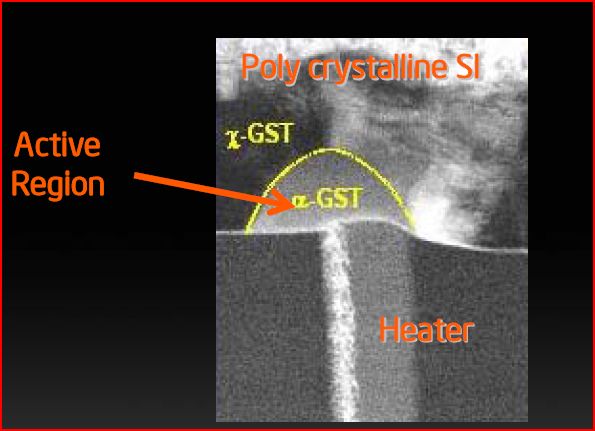New phase change tech threatens flash memory
Boost for solid state hard drives

Computer chip boffins at Intel have doubled the capacity of their experimental phase change memory technology. The development could lead to even cheaper, faster and higher capacity USB memory sticks and solid state hard drives.
Like flash memory, phase change memory is a non-volatile solid state technology. That, folks, means it can store data without power and has no moving parts, all of which is good news for portable devices.
However, in most other regards, it plays by different rules. Unlike flash memory, phase change memory doesn't use electrons to store data. Instead, it relies on the arrangement of the atoms inside a memory cell, otherwise known as the material's physical state or phase.
Previously, phase change memory cells could be induced into just two states, known as amorphous and crystalline. However, in a paper presented to the International Solid State Circuits Conference this week, Intel announced new prototype cells capable of a further two states courtesy of a new material known as chalcogenide or GST. Well, obviously.
Double your data, double your fun
In simple terms, that means Intel can double the data capacity of a phase change memory chip without adding any additional cells. Clever, eh? Indeed, but storing four bits of data per cell is a trick that is also possible with flash memory.
So what's the big deal with phase change memory? For starters, it's much, much faster than flash memory. Fast enough, perhaps, that devices would no longer need two banks of memory: one composed of fast but volatile SRAM or DRAM, the other of slow but reliable flash memory.
That alone is enough. But it might just be possible to add support for further states to phase change memory and so increase data densities even more. That's a subject Intel currently will not be drawn on, though there was an element of non-denial denial in the way Intel CTO Justin Ratner fielded the suggestion.
Sign up for breaking news, reviews, opinion, top tech deals, and more.
Anywho, do not get too excited just yet. Phase change memory technology is still a few years away from commercial availability. But with this latest development it is now the clear favourite to usurp flash memory.
Technology and cars. Increasingly the twain shall meet. Which is handy, because Jeremy (Twitter) is addicted to both. Long-time tech journalist, former editor of iCar magazine and incumbent car guru for T3 magazine, Jeremy reckons in-car technology is about to go thermonuclear. No, not exploding cars. That would be silly. And dangerous. But rather an explosive period of unprecedented innovation. Enjoy the ride.